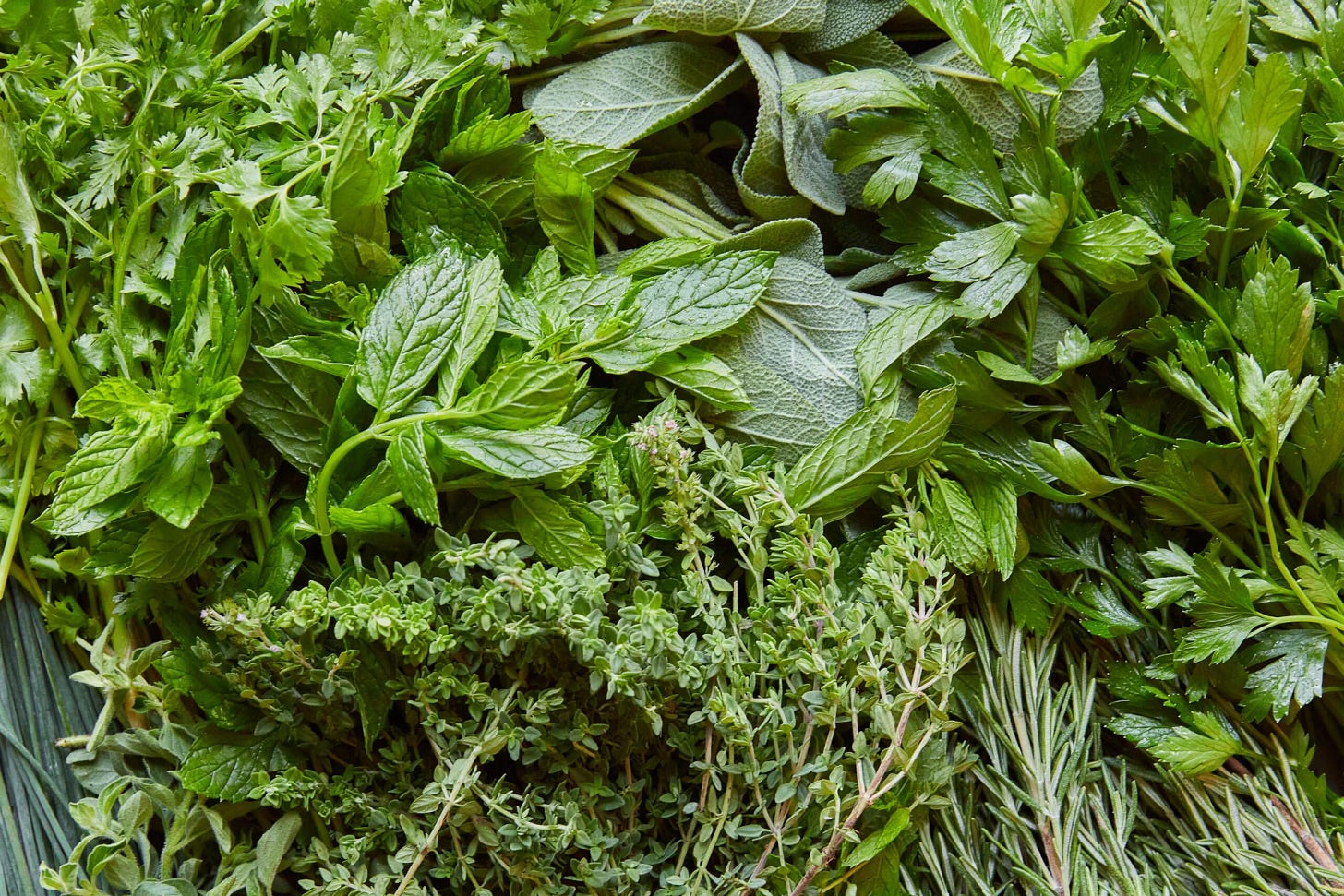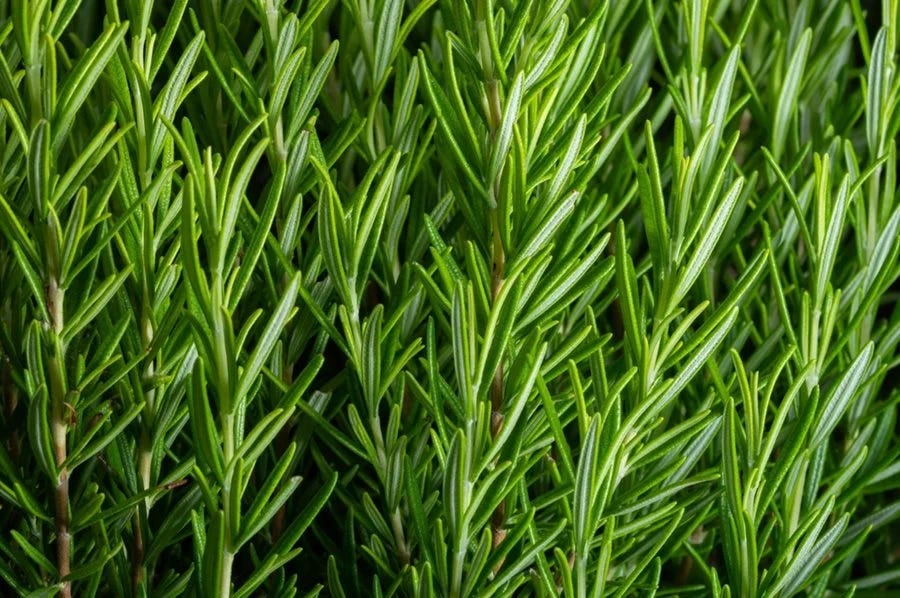If I was a betting man, I’d bet that everyone reading has had at least one herb a day for the last twenty years. That’s pretty wild. Most people, except for those poor few who have not discovered the joys of flavor, eat herbs all the time, largely without really thinking about them. So, because I’m nothing if not predictable, I decided to rank some of the most common ones. You’re welcome.
14. Bergamot
Normally, I don’t have things on my list that I don’t like at least a little bit, but I’m going to make an exception for Bergamot. This stuff is trash. Basura. Poubelle. Rusl. Zibil. Get that shit outta here. It tastes like dirty dish water and light brown flowers. Most people know this one from Earl Grey tea, but it’s been infecting things like lemon pound cake and doughnuts recently. It’s just too lightly floral to add anything useful to a dish. Hard pass.
13. Tarragon
Tarragon should be cool. It has a badass name. Tarragon. Sounds like an even sicker version of “octagon,” a concept that is already pretty awesome. Just try saying it with a deep WWE announcer voice. Feels good. Unfortunately, tarragon has just too much of an anise kick for most applications. It feels like it should be in a lot of Italian dishes, but anything more than the smallest pinch is usually too much. There are much better herbs out there. The French got it wrong with this one.
12. Parsley
This is an herb for babies. A practice herb. The thing that a novice who is just starting to get into cooking won’t stop prattling on about. Like we get it. Everyone already knows the whole deal with parsley. The outer limits of what it can do have been discovered. It’s like the tic-tac-toe of flavors. It’s fine, but it’s certainly not revelatory.
11. Bay Leaves
Bay leaves are a tricky one. They’re essential in many dishes. Add some bay leaves to your rice the next time you make it and try to tell me that it doesn’t taste much better. Bonus points for being the rare herb that is better dried than fresh. But bay leaves also don’t really have a good flavor on their own. No one is out there chopping up some bay leaves and adding them to their dish to really make it pop. If they are, stay away from that kitchen. Plus, who is out here trying to eat brown, dried, leaves? Not me!
10. Oregano
The Ancient Greeks knew what was up when they started adding this to all their dishes.[1] If someone tells me that they don’t oregano, I tell them that they should say “orega-yes!” instead.[2] It’s great on chicken, gyros, and feta fries. The only problem with oregano is that if you get it fresh it is a big ol pain in the butt to strip the actual herbs. The leaf-to-stalk ratio is insane on these bad boys. I know that there are various things I could buy for this exact problem, but I’m not made of money! It’d be higher if they were easier to work with.
Hey everyone! Thanks for reading! Please subscribe if you haven’t already. If you’re already subscribe, please consider upping it to a paid subscription. You get to join a great community of readers and commentors! You also get to support me! Isn’t that great?!?!
9. Lemongrass
Lemongrass is the herb-lover’s herb. It’s sour, tart, and great in soups and stews. It also looks cool to walk out of the grocery store with a couple of big ol’ stalks of lemongrass. People really think you know what you’re doing in the kitchen if you’ve got some of those. It’s like you’re the king of the Mariano’s. It gets knocked a couple of points for being a hassle to prep though and if you don’t use it correctly, it’ll end up stringy and stuck in everyone’s teeth.
8. Sage
Allow me to sing a little song about one of my favorite herbs:
Sage leaves and bread and cheese isn’t missing
Fried up in butter on pasta can really be hitting
Fresh green sage leaves tied up with strings
These are a few of my favorite things
7. Thyme
Thyme is like the perfect medium herb. It’s good on a lot of stuff, but also super unmemorable. The mids to Rosemary’s gas. Like try to think of what thyme tastes like. I bet you can’t. That’s why it’s exactly in the middle of this list. Everyone knows about it, but no one is like in love with it. Whenever I make any type of pasta sauce I always add thyme, because, well, it just seems like I should. It’s never been a bad decision, but it’s also never taken the sauce to the next level.
6. Dill
My mom makes an insanely good dill bread, literally one of those foods that will just never be topped for me. Best known as the pickle herb, dill has plenty of other uses, including being a wonderful fresh addition to sandwiches and salads. A dill vinaigrette will never not make me happy. The light fronds look like something out of Jurassic Park, so I always feel a little like a dinosaur when I eat it, which is just a nice added bonus.
5. Mint
Mint is a fully underrated herb. A lot of people think of it only as something to put in a drink or as a toothpaste flavor, but that’s really missing the forest for the trees. There is a whole realm of possibility with mint. It’s fantastic with salads, good on fruit, and with a little patience and experimentation, on pork and chicken dishes too. It’s such a fresh distinct taste that has nothing to do with various “mint”-flavored gums and medicines. Do not miss out on the possibilities of mint.
4. Basil
I’m not afraid to say it: Basil is a glory hog. It is constantly stealing the spotlight from other herbs, despite not being the most talented. Basil is the John Lennon of herbaceous plants. The Draymond Green of the edible florae. The Golden Doodle of flavor-adding shrubs. This isn’t to say that basil isn’t delicious, it is fourth on this list after all, but it’s just not as good as its popularity suggests. It can really take over a dish in a negative way, and it’s very easy to use way too much of it. Basil could stand being out of the spotlight for a second or two.
3. Chives
Like Sam from Holes, I’m an onion man. Chives provide that nice little pungent onion kick. They also just look nice when added to a dish. A perfect accouterment to an omelet, a stew, or a simple piece of bread with some butter on top. Perfect round little slices of green that really add some pop to a lot of dishes. An aesthetic herb. Chives are also wildly easy to grow at home, and keep growing even after you harvest them, so you can have them fresh year-round if you want. The freeze-dried ones work in a pinch, but they’re not quite as good as the fresh.
2. Cilantro
If you have that gene that makes you think cilantro tastes like soap or something, that freaking sucks. If I were a scientist, I would research ways to change DNA strands, but just for cilantro. There are few things better than a taco loaded up with al pastor, chopped white onion, and just a bunch of chopped-up cilantro. Heaven on Earth. Cilantro, in both dried and fresh forms, is a supremely versatile herb, perfect for all types of cuisines. It’s mostly known for being in South and Central American food but you can add it to any number of other recipes for the perfect addition.
1. Rosemary
If rosemary has 100 fans I am one of them. If rosemary has one fan, I am it. If rosemary has 0 fans, I am dead. Rosemary can do no wrong. It’s great on red meat, white meat, fish, and tofu probably. It’s good with veggies, in water, and I’m sure it has some type of medicinal properties that I’m unaware of. Like it cures bunions or something. The only knock against rosemary is that it’s a bit of a pain to grow at home, but if you do get those seeds popping, it’s a very hearty plant. Rosemary is peak herb. Bold, versatile, and dare I say it, vivacious.
[1] I have no idea if Ancient Greeks used oregano. Probably not.
[2] I’ve never said that in my life.
Liked what you read? Please like, share, comment, and subscribe!







